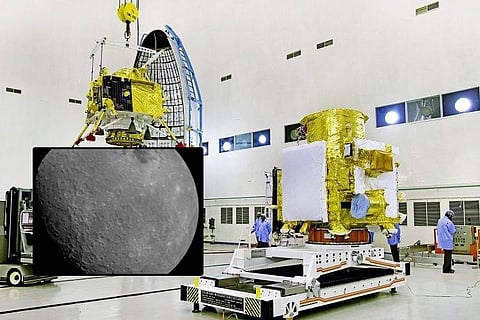

Chandrayaan-2 which is in the lunar orbit and just days away from attempting to land on the moon has sent back a second set of pictures. The photos were captured by the spacecraft’s Terrain Mapping Camera-2 (TMC-2) on August 23 at the altitude of 4375 kilometres and feature impact craters like Jackson, Mitra, Mach and Korolev.
An impact crater is one that is formed by the impact of a smaller bodies such as meteorites colliding into the moon’s surface. The circular shape of the craters is because of the material flying out in every direction, and not because the colliding body itself is circular in shape, which is hardly ever the case.
The Jackson impact crater on the moon, which is in the northern hemisphere of the lunar satellite, is 71 kilometres in diameter. “The interesting feature at the western outer rim of Mach crater is another impact crater, Mitra (92 km dia). It is named after Prof Sisir Kumar Mitra, who was an Indian physicist and Padma Bhushan recipient known for his pioneering work in the field of ionosphere and radiophysics,” ISRO said.
The Korolev crater meanwhile is 437-kilometers and has many small craters of different dimensions.
Another crater identified in Chandrayaan-2’s photos is Sommerfeld, located in the farside northern latitudes of the moon. With a diameter of 169 killometres, the crater, which is located at 65.2°N and 162.4°W has a “relatively flat interior surrounded by a ring mountain and a number of smaller craters lie along the rim edge.” It is christened after Dr Arnold Sommerfeld, a German physicist known for his work in atomic and quantum physics.
“North east to this crater lies the Kirkwood crater named after the American astronomer Daniel Kirkwood, another well-formed impact crater which is approximately 68 km dia (sic),” ISRO noted.
Impact craters such as Plaskett (109km), Rozhdestvenskiy (177km) and Hermite (104 km; one of the coldest spots in the solar system at 25 deg K)
Chandrayaan-2, which is India’s most ambitious lunar mission to date, will attempt to make a landing on the south side of the moon on September 7. If successful, India will become the fourth country in the world to have a made soft landing on the moon after the US, former Soviet Union, and China.